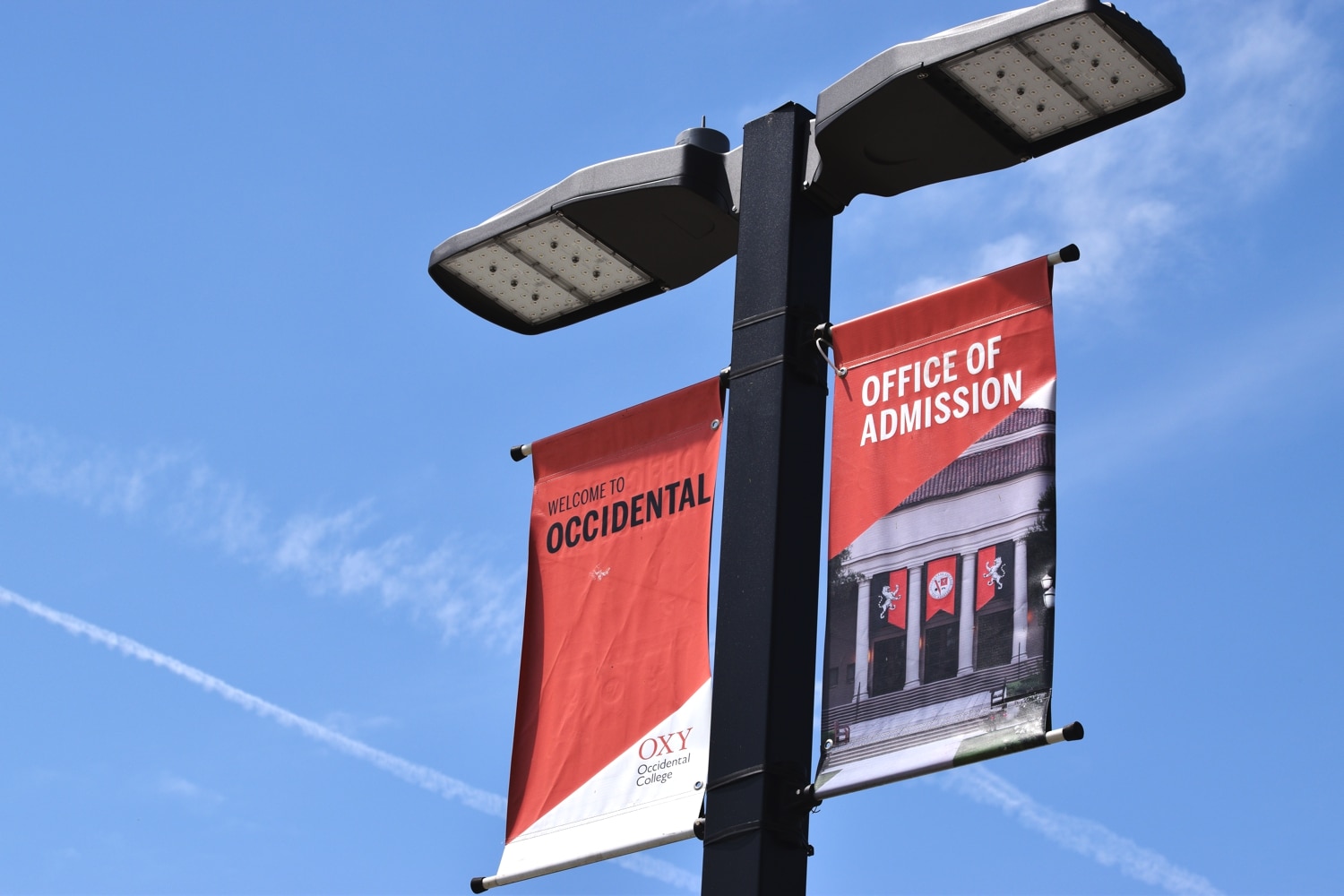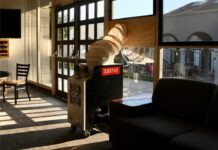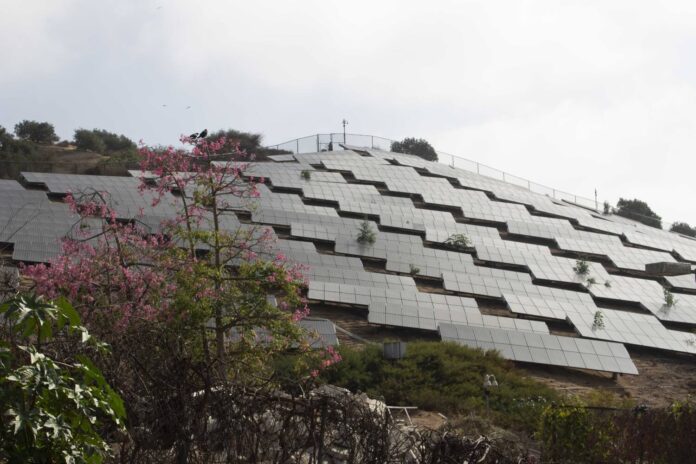Physics professor Dan Snowden-Ifft sent an email updating the Occidental community about the Solar Array, a solar panel installation on the side of Mount Fiji, in celebration of Sun Day Sept. 21. Sun Day is a day of action to celebrate the power of clean energy — produced from sources such as solar, wind and battery, which are also the cheapest forms of power on the planet. In a later interview with The Occidental, Snowden-Ifft said that the Solar Array was built, in part, for the college to demonstrate its commitment to renewable energy and sustainability practices in a fiscally responsible manner.
“I got myself a position in a group called the Sustainability Group back in 2008 or 2009 under Interim President Robert Skotheim,” Snowden-Ifft said. “Out of that grew the Solar Subcommittee, and it was that committee that pushed for and contributed to getting the array approved by the board and constructed.”
Snowden-Ifft said the process for getting the Solar Array approved was difficult because of the cost as well as the initial design, which he said people hated until artists worked to redesign the array. He said the specific design change was to make the solar panels appear to mimic the shape of the mountain underneath, making the structure look more fluid and natural with the landscape.
“It was that design element that really made the difference at the end of the day, and this story really emphasizes that all the liberal arts are important,” Snowden-Ifft said. “I had to get the artists going, the politicians going, the economists going, the physicists going. It took a lot of different skill sets to get the array here.”
Snowden-Ifft said he has a monitoring system where he calculates for the billing period how much energy Occidental has saved or, in other words, how much energy the array has produced. He said he compares the amount of energy produced by the array to the price of Occidental’s electricity from the LA Department of Water and Power (LADWP). He said that with the cost of energy saved, he estimates the Solar Array will be fully paid back in two years, and he will continue to give updates on Occidental’s website.
“We really make all our money in the summer, and the last four months we have saved the most money because the LADWP skyrocketed their prices for electricity,” Snowden-Ifft said.
Assistant Director of Sustainability Alison Linder said that the solar panels are part of a larger push for a more sustainable campus. She said the Office of Sustainability recently signed a major climate commitment in January 2024, which commits Occidental to having a carbon neutrality target and action plan by Spring 2027.
“The Office of Sustainability does three main things: climate action planning and sustainability planning, creating a culture of sustainability on campus and facilities operations,” Linder said.
According to Linder, electricity accounts for 22% of the campus’s carbon budget, and the Solar Array offsets that by about 10%.
“Separately, there is also solar on the Samuelson Alumni House, and we just put solar on Paulhan House,” Linder said. “While we wait for the grid to become carbon neutral, we can do what we can to offset energy sooner, which ties into the day-to-day facilities operations.”
Linder said in addition to advocating for more renewable energy and thinking about Occidental’s larger climate action plan, she collaborates with students and faculty to help develop programs and events relating to sustainability. She said this collaboration ties into what Occidental plans to do for Sun Day next year, which came from Snowden-Ifft’s request to do something this year for the occasion.
“For next year, I’d really like to get us on the map for Sun Day and maybe have a tour of our Solar Array and open it up to the broader community,” Linder said. “I think it would be really cool to showcase the Solar Array and the other renewable energy projects we have on campus.”
In the future, Snowden-Ifft and Linder said they hope to bring another mode of renewable energy to Occidental in the form of batteries.
“Environmentally, the benefit is not necessarily for Oxy’s specific carbon footprint but more holistically for the development of the energy grid,” Linder said.
Ian Havill (sophomore) is a part of a physics independent study research program with Snowden-Ifft. He said they are currently working on running a simulation where the college uses a battery that is set to charge during times of the day when electricity costs the lowest and discharges when it costs the highest.
“We basically see what times we can run it to bring down the cost of the college’s electrical power usage,” Havill said. “There is a method in a lot of electrical industries for peak shaving, which is where every time we go above a certain amount, we will try to draw power from our battery instead.”
Snowden-Ifft said that the Solar Array has done its job to contribute to the increasingly greener grid and that, in order to further solidify our energy on campus in a renewable way, Occidental should invest in batteries.
“Batteries are growing even faster than solar energy in California right now,” Snowden-Ifft said. “It would provide the campus with the ability to keep the lights on in case of an emergency, so it’s not just about sustainability and stabilizing the grid, but also about resiliency.”
Contact Miriam Arenal at arenal@oxy.edu
![]()




































Miriam,
Do you have any info. from the college’s Natural Sciences depts. that describe the ecologic, and other environmental considerations (watershed, erosion, biologic) of the Solar Array installation and related maintenance activities on Mt. Fiji?
Warm Regards,
Derrik
.. ( if y’know; you know )